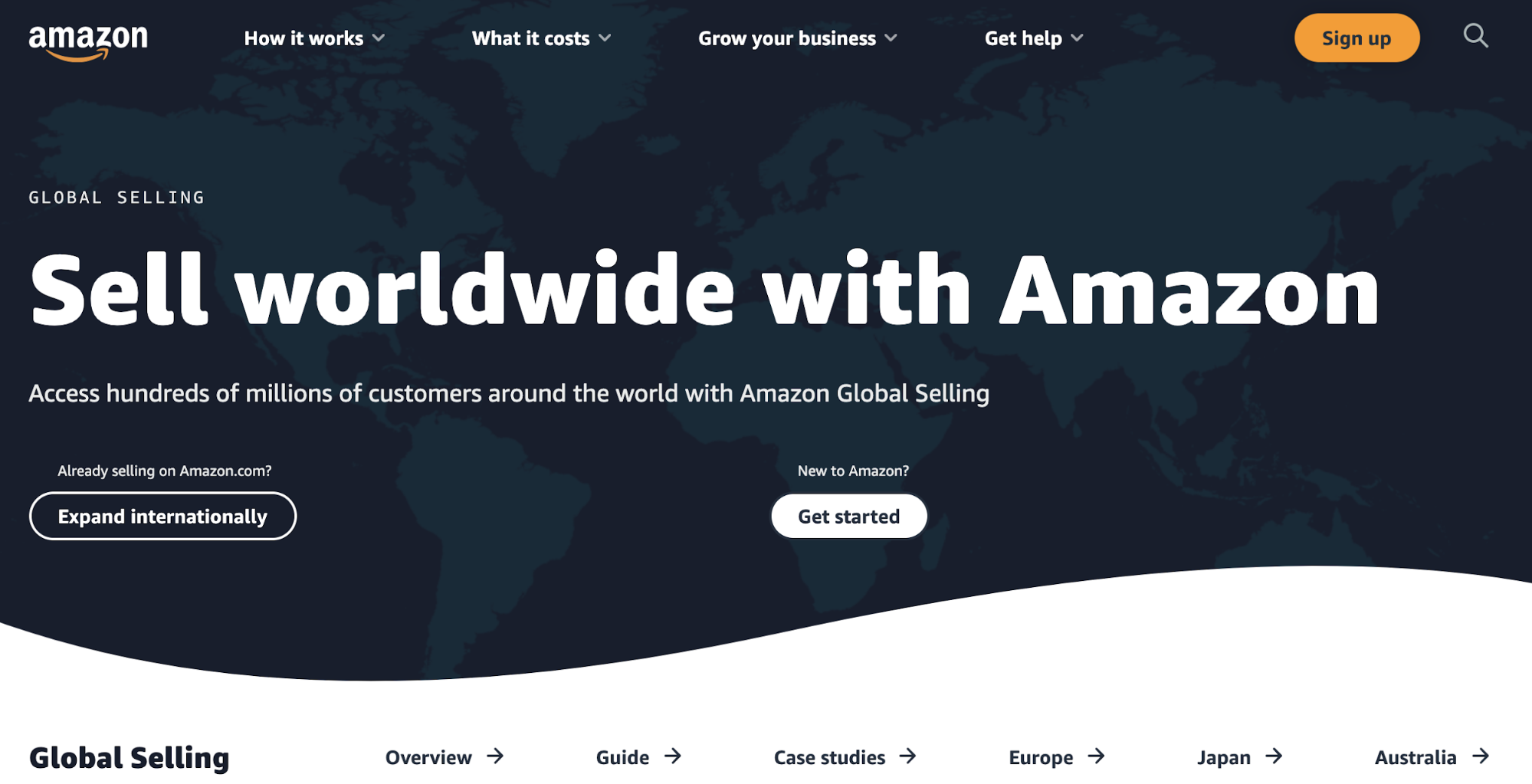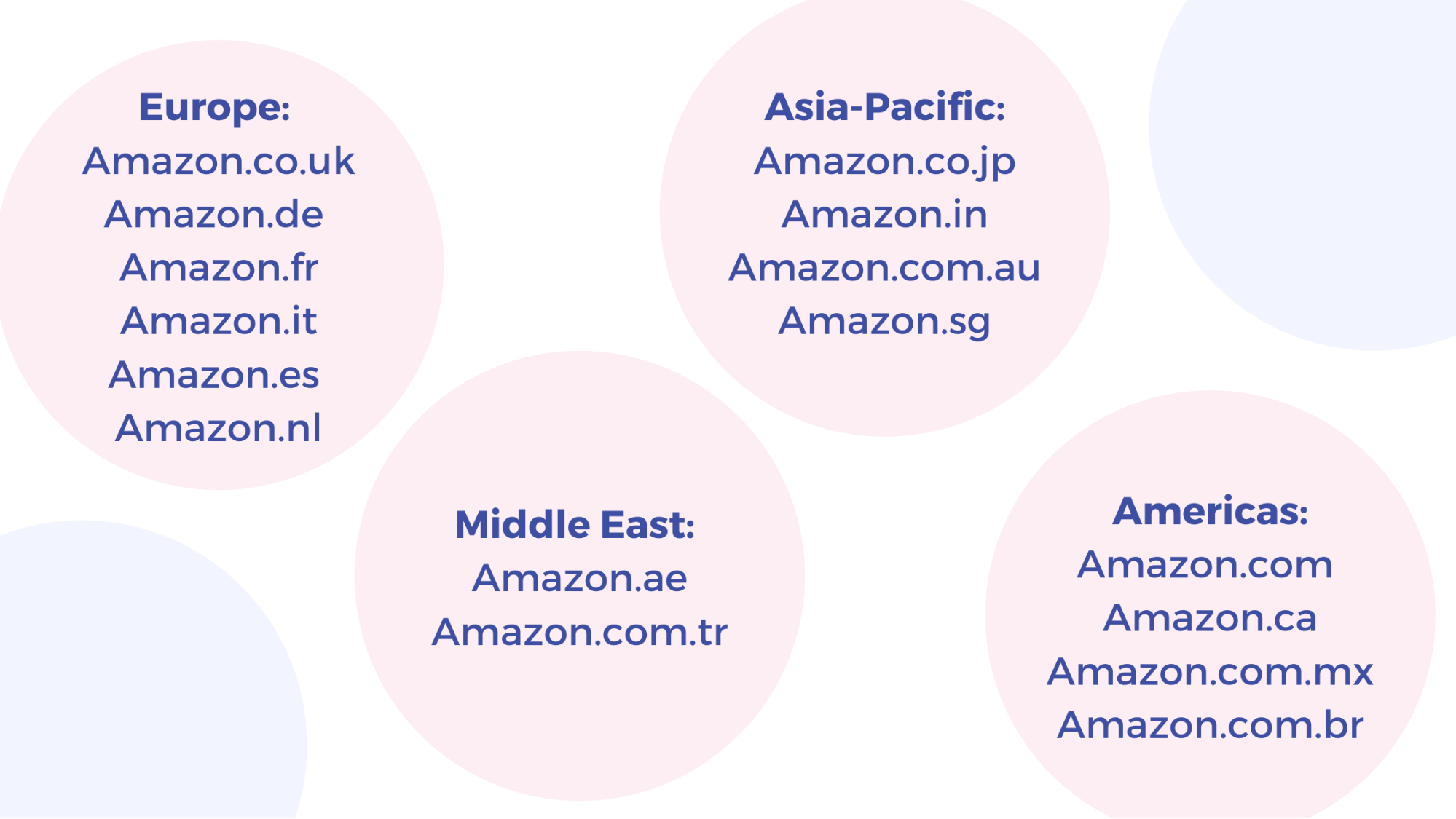Selling on Amazon? How to sell on Amazon overseas?

Selling on Amazon? How to sell on Amazon overseas?
Considering to further develop your business on Amazon? Getting the feeling that your company’s performance drops by the end of the season? Wanting to enter new markets? Good for you! Selling on your local market only, you prevent your business from developing and do not realise its full potential. ‘International trade’ sounds serious but thanks to over 300 million of active user accounts and Amazon Global Selling it is easier than ever.

What is Amazon Global Selling?
Amazon Global Selling (AGS) enables you to extend your business reach into other countries, and to develop it globally. AGS makes it possible to grow your business through releasing and selling products on any of the 16 global Amazon markets.

Benefits of Amazon Global Selling
If you are a successful seller in your region, going international may be one of the best ways to further develop your business. Entering new markets, you will be able to increase your sales and to reach new customer databases. While broadening your customer database is one of the practical reasons for international trading, the sales peak seasons in different countries vary. It is a great opportunity to make up for the periods of low sales on your local market. Amazon is also a brand that gained trust of millions of consumers from all over the world. While customers from different corners of the globe may not know your brand, they may be eager to buy from a brand such as Amazon—that they know and trust. Amazon makes it also easier to enter international markets. Taking advantage of the FBA model, Amazon not only carries out orders on your behalf, but also takes over the customer service.

Legal and industry requirements
Before you proceed to register the sale, it’s worth to check whether selling your product overseas is legal. Whereas the Amazon Global shop automatically converts the prices into local currency, making it easier for consumers to shop, the sellers should be extra careful while trading on different markets. Just like your local market, each country has its own industry and legal trading requirements. Before making a decision to expand into other markets, it is advisable to get to know e.g. intellectual property, product safety and environmental protection regulations. Here are some legal and industry requirements that should be considered:
- Intellectual property rights
- Parallel import
- Export control
- Labelling and marking
- Environmental regulations
- Health & safety
Amazon Global Selling—how to kick off
Step 1: Decide on where you want to sell
As mentioned earlier, Amazon runs 16 online shops all over the world, in Europe, APAC region, the Middle East and in Americas. Those markets create unparalleled e-commerce possibilities globally, whereas the client base knows how to shop on Amazon.

Here’s the full list of Amazon marketplaces:
Europe:
APAC:
The Middle East:
Americas:
Step 2: Decide on what you want to sell
If you are an Amazon seller, you probably already know what products potential clients search for and how to gain their interest in your offering. Take advantage of what you know to find profitable products in other markets. Check whether a given product category is as popular in those markets as it is in yours.

Making a decision on what to sell, try to focus on the market of products for a particular country. It is also worth considering the legality of selling specific products overseas. Begin with the bestsellers of your native market, and then assess the chance for their successful sale in other markets. Once you figured out the method of finding products on Amazon in your native market, do your homework and carry out a similar research of other markets. Amazon recommends also to sell a wide range of products (rather than focusing on just one or two products) which increases the chance of being found by the consumer. Once you figured out the method of finding products on Amazon in your native market, do your homework and carry out a similar research of other markets. Amazon recommends also to sell a wide range of products (rather than focusing on just one or two products) which increases the chance of being found by the consumer.
Step 3: Register
If you are a registered seller in any market, you have to register an additional seller account for the country in which you want to sell. Prior to registration, check the local registration requirements, just to be sure that you qualify. Remember also that after registering in one European Amazon market you automatically can sell in all European Amazon markets. The registration process on all European commerce platforms will be carried out in a local language.
Step 4: Product list
Upon the registration, you can begin with listing your products. The requirements regarding the Amazon product list include product identifier, product title, product description, product images and keywords. The requirements regarding product lists may vary depending on the commerce platform. Before putting your products up for auction, get to know the market guidelines.
Step 5: Focus on shipping and completing orders
You have to decide whether yo want to complete orders by yourself or with the aid of FBA. The FBA service is recommended in case of offering services internationally as it provides a suitable customer service in many languages—which means that you don’t have to worry about shipping particular products overseas.

Making use of the FBA you have to import the products that are supposed to be stored in FBA centre of that country. The completion and shipping of an order are then taken over by FBA.
Step 6: Run your new international business
Running Amazon business in several countries, the majority of sellers refers to the inventory management system for Amazon sellers, to manage all operations on Amazon within one system. It enables not only to track the inventory status but also to have an overview of the product sale and marketing figures. If your major worry is language barrier, the language switch in the Seller Centre will make managing your operations in your native language a lot easier. Remember, however, that you are obliged to provide customer service in a local language of a given market.
We hope that the above steps will help you to stand out on the global Amazon markets and that they somehow made you more aware of the whole process. Surely the idea of international trading may be a bit frightening, especially when it comes to legal or logistic matters. Please note, however, that millions of users trusted Amazon which continuously does its best to make running your business on many markets more friendly. Amazon facilitates international trading within one platform which means unlimited benefits for your business. New markets await you!








